Bahrain industrial strategy aligns with GCC goals
19 December 2023

Register for MEED's guest programme
With limited energy resources and land compared with its larger neighbours, Bahrain needs a targeted industrial strategy that supports economic development across the region and plays to the island kingdom’s strengths.
“We look to complement the GCC rather than compete,” says Industry and Commerce Minister Abdulla bin Adel Fakhro.
“We always look for industries where we can fit in each other’s supply chains so that we can substitute imports from outside of the GCC with products from within the GCC.”
The ministry has a strategy for each of its key sectors, with most starting in 2022 and typically running for four years. The strategies encompass industry, small and medium-sized enterprises (SMEs) and digital businesses. Targets include increasing contribution to overall GDP.
Target sectors
 Bahrain’s industrial strategy covers five main target sectors.
Bahrain’s industrial strategy covers five main target sectors.
“Downstream aluminium is very important because we have Alba [Aluminium Bahrain], which is the largest single-site smelter outside of China and continues to expand and grow production,” says Fakhro.
“We have a new downstream aluminium park to the south of Alba, and the big advantage for companies there is they can buy hot metal.
“We also provide other incentives, such as low-cost land and energy, and provide support with the purchase of equipment.
“Through the labour fund Tamkeen we can help with the workforce.”
There are also plans to expand Alba with the Line 7 project. Last year, a firm was appointed to complete the feasibility study for the project, which is expected to have a similar production capacity to the Line 6 expansion project – within the range of 540,000 metric tonnes a year.
Petrochemicals is another major industry for Bahrain.
“We have a presence in that sector with Bapco Energies and GPIC [Gulf Petrochemical Industries Company]. They are major producers, so downstream petrochemicals is another opportunity,” says Fakhro.
Like aluminium, there will be a significant increase in capacity in the near future as the $7bn Bapco Modernisation Programme (BMP), which involves boosting the total throughput at the Sitra refinery to 400,000 barrels a day (b/d) of oil, enters the final stages.
The other three industrial sectors are food manufacturing, medicine production and new sectors including semiconductors and the production of components for use in renewable energies.
In-country value
To support local industries, Bahrain is establishing an in-country value system that determines a supplier’s local content, similar to those implemented in Saudi Arabia and the UAE.
“Companies with a good in-country value score get a 10 per cent advantage on government tenders,” says Fakhro.
Bahrain is also working with other GCC states to create an in-GCC programme. “What we are trying to do with this is jointly recognise other countries’ [in-country] value. This means a product produced in Bahrain would get an advantage in another market, such as Saudi Arabia or the UAE,” says Fakhro.
“Likewise, a GCC employee would be equivalent to hiring a local employee. We are looking at different ways to become one market.”
These programmes are still being negotiated, with discussions at the GCC currently centred on determining what constitutes a GCC product.
“That is the start. When we have a clear definition of what a GCC product is, then we can open the doors,” says Fakhro.
As a small country with a long history of being a trading hub, Bahrain is keen to access larger markets. Hence its industrial strategy is outward-looking. As well as working on a GCC-wide in-county value system, there have been several other key developments in recent years.
“We have a very interesting project funded by [Abu Dhabi-based holding company] ADQ. It has four countries: the UAE, Egypt, Bahrain and Jordan. This group of countries came together soon after the Covid-19 pandemic to complete each other’s supply chain,” says Fakhro.
Known as the Integrated Industrial Partnership for Sustainable Economic Development, ADQ has backed the partnership with $10bn of investment. Its target sectors are agriculture, food, fertilisers, medicines, textiles and apparel, metals, petrochemicals and plastic.
We have a highly skilled workforce that is well-educated with a strong work ethic
Other focus areas
Semiconductors are of particular interest to Bahrain and the country hopes to play an active role in this sector.
“We are interested in that sector. The world realised that this sector will be critical in the future, and there needs to be manufacturing in other parts of the world so that one nation does not have a monopoly.
“The sector suits Bahrain because it does not require a lot of energy or land,” says Fakhro.
“Bahrain’s big asset is its people. We have a highly skilled workforce that is well-educated with a strong work ethic. This attracts all types of businesses in many sectors, especially in advanced manufacturing and the ICT sector,” says Fakhro.
Another important area of focus for the ministry is supporting SMEs and local startups.
“We are working hard to improve the ecosystem for SMEs,” says Fakhro. “The major challenge for SMEs is access to financing. This is not only in Bahrain; it is a worldwide challenge. Bahrain is home to over 300 multinational banks, but still, that doesn’t by default mean that SMEs have easy access to money.”
The other challenge is access to international markets. “Especially when you look at sectors such as manufacturing, Bahrain will give you limited growth potential. We support SMEs with exports. We have a government-owned entity, Export Bahrain, that facilitates export support for Bahraini companies, including SMEs.”

Exclusive from Meed
-
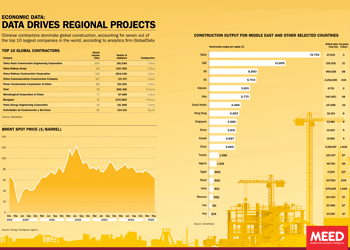 June 2025: Data drives regional projects
June 2025: Data drives regional projects30 June 2025
-
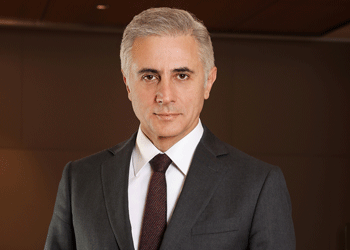 UAE-Turkiye financial links strengthen
UAE-Turkiye financial links strengthen30 June 2025
-
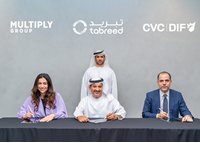
-
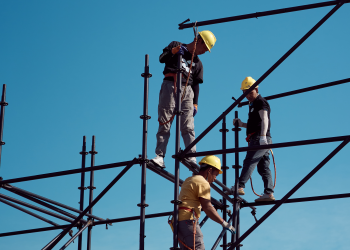 Iraq approves Basra housing project
Iraq approves Basra housing project30 June 2025
-
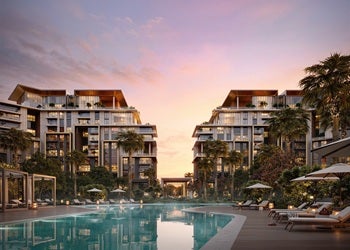 Meraas announces Dubai City Walk expansion
Meraas announces Dubai City Walk expansion30 June 2025
All of this is only 1% of what MEED.com has to offer
Subscribe now and unlock all the 153,671 articles on MEED.com
- All the latest news, data, and market intelligence across MENA at your fingerprints
- First-hand updates and inside information on projects, clients and competitors that matter to you
- 20 years' archive of information, data, and news for you to access at your convenience
- Strategize to succeed and minimise risks with timely analysis of current and future market trends

Related Articles
-
 June 2025: Data drives regional projects
June 2025: Data drives regional projects30 June 2025
Click here to download the PDF
Includes: Top 10 Global Contractors | Brent Spot Price | Construction output
To see previous issues of MEED Business Review, please click herehttps://image.digitalinsightresearch.in/uploads/NewsArticle/14171168/main.gif -
 UAE-Turkiye financial links strengthen
UAE-Turkiye financial links strengthen30 June 2025
 This package on UAE-Turkiye relations also includes:
This package on UAE-Turkiye relations also includes:> UAE-Turkiye trade gains momentum
> Turkiye’s Kalyon goes global

Turkish bank DenizBank is one of Turkiye’s leading private banks and, as a wholly owned subsidiary of Emirates NBD since 2019, it is playing a leading role in developing business links between the UAE and Turkiye.
Recep Bastug, who was appointed as DenizBank’s CEO in 2024, says there is great potential for trade between the two countries.
“Turkiye is a growing country,” he says. “We’ve had volatility over the past five years, but the Turkiye economy and the banking sector have been able to manage those periods successfully.”
Having spent years with international institutions such as BBVA, Bastug has vast experience in the banking sector. “Turkish banks, especially private ones like DenizBank, are very successful. In terms of capital, balance sheet structure and digital transformation, we are in a strong position,” he says.
 Solid fundamentals
Solid fundamentalsTurkiye’s fundamentals remain solid with a diversified export-oriented economy, a young and skilled population of 85 million, and relatively low debt levels. “We are not a highly leveraged country. Our household debt-to-GDP ratio is low. With the right policy mix, we offer high potential for foreign investors,” says Bastug.
That potential is increasingly being realised through growing engagement with the GCC and the UAE. “Turkiye’s connection with the Gulf is going up, and DenizBank is set to play a serious role in these relations. Day by day, Turkish companies are expanding their footprint in the region.”
GCC projects
Baştug says that many of these companies approach DenizBank to help facilitate their entry into Gulf markets. “Some of our clients are extremely well capitalised, but others need support for major projects. Just recently, one Turkish company announced a $3bn project in the region. We’re helping them connect with Emirates NBD and navigate the local financial landscape.”
DenizBank is actively supporting the creation of trilateral partnerships – particularly between Turkiye, the UAE and Saudi Arabia. “We see huge opportunity in forming financial strongholds across these markets, leveraging Turkiye’s contractor experience, the UAE’s capital and Saudi Arabia’s scale,” says Baştug.
DenizBank is already delivering results. “With Emirates NBD, we’ve identified 10 strategic cooperation areas, including trade finance, payments and capital markets. Thanks to this partnership, Emirates NBD has become the number one debt capital markets bank in Turkiye, even ahead of global players.”
One area of growing activity is initial public offering (IPO) participation. “We’ve launched a mutual fund that allows Turkish private banking clients to participate in IPOs from the region, including from the UAE and Saudi Arabia. It’s a diversification strategy and helps retain wealth within the group.”
Turkiye’s connection with the Gulf is going up, and DenizBank is set to play a serious role in these relations. Day by day, Turkish companies are expanding their footprint in the region
Recep Bastug, DenizBankInflation ends
Despite the current inflationary environment, Bastug says there is a clear inflection point ahead. “We expect 2027 to be a turning point. Once we exit the inflationary accounting regime [in Turkiye], DenizBank will become one of the biggest contributors to Emirates NBD’s global balance sheet. Last year, we contributed $1.2bn. In 2027, it will be significantly more.”
DenizBank is the fifth-largest private bank in Turkiye with about a 5% market share. “The largest private bank is at 13%. It’s not easy to close that gap – but we will do it. Our long-term goal, aligned with our shareholder, is to become the biggest and most successful private bank in the country.”
The bank is especially focused on agriculture, SMEs, and export financing – sectors that are deeply relevant to
Turkiye’s economic growth and to regional demand. “We are the leading agricultural bank in Turkiye, and we believe strongly in the sector’s future – both for local consumption and exports.”Regional opportunities
Bastug also sees potential for engagement beyond the GCC, including in post-conflict reconstruction. “In the past, Turkiye had strong trade volumes with Syria. Even during wartime, commercial links remained. Once a stable environment emerges, there will be opportunities – especially in infrastructure.”
While a physical branch presence is not currently being considered, DenizBank is prepared to support Turkish contractors operating in neighbouring countries. “We have the relationships and expertise to facilitate this growth. And culturally, we’re well aligned with the region – it helps make business smoother.”
As Turkiye re-establishes economic momentum and Gulf economies look to deliver on long-term visions, DenizBank is positioning itself for a more active role in the region in the future. “We are preparing the bank for the next stage, and with the backing of Emirates NBD, we’re confident in our ability to lead.”
READ MORE
> UAE-Turkiye trade gains momentum
> Turkiye’s Kalyon goes globalhttps://image.digitalinsightresearch.in/uploads/NewsArticle/14170372/main.gif -
 Multiply agrees to sell Pal Cooling to Tabreed and CVC
Multiply agrees to sell Pal Cooling to Tabreed and CVC30 June 2025
Abu Dhabi-based investment company Multiply Group has agreed to sell all of its shares in its district cooling subsidiary Pal Cooling Holding (PCH) for AED3.8bn ($1bn) to a consortium comprising Engie-backed National Central Cooling Company (Tabreed) and CVC DIF.
The transaction is still subject to regulatory approvals.
MEED exclusively reported in May that a team comprising Tabreed and CVC was holding exclusive discussions to acquire PCH.
Multiply Group initially acquired a 100% stake in PCH and its subsidiaries in July 2021.
Multiply Group has been advised by Standard Chartered and Clifford Chance. Tabreed and CVC DIF have been advised by Citi, Synergy Consulting and White & Case.
The transaction brings together two of the UAE’s leading district cooling players. PCH was founded in 2006 and operates five active district cooling plants across the UAE. The company maintains eight long-term concessions and strategic partnerships with some of the UAE’s leading real estate developers, servicing key residential, commercial and mixed-use developments – most notably on Abu Dhabi’s Reem Island.
Tabreed owns and operates 92 plants, including 76 in the UAE, five in Saudi Arabia, eight in Oman, one in Bahrain, one in India and one in Egypt, in addition to other international projects and operations.
https://image.digitalinsightresearch.in/uploads/NewsArticle/14170511/main.jpg -
 Iraq approves Basra housing project
Iraq approves Basra housing project30 June 2025
Iraq has approved plans to build a housing project in Basra that will offer about 5,000 homes in the first phase to tackle the country’s rising housing shortage.
The project, which is endorsed by Iraq’s National Investment Commission (NIC), will cover an area of about 3 square kilometres.
According to local media reports, Basra province governor Asaad Al-Idani said the project has already been awarded to a developer.
Iraq has been gradually recovering since the war. The government initially prioritised infrastructure and public housing to stimulate economic growth, improve living standards and attract foreign investment.
More recently, benefitting from higher oil prices and a period of relatively stable governance, Baghdad has expanded its focus to reconstructing and modernising the country’s deteriorating infrastructure.
The Iraqi construction market has also seen significant investments from private real estate developers from the region. In May, Egyptian real estate developer Ora Developers announced that it had started construction on the Al-Wardi residential city project, which consists of more than 100,000 residential units covering about 61 million square metres (sq m) on the southeastern side of Baghdad.
The move is the latest sign of international investors’ growing appetite for developing real estate in Iraq as part of the country’s post-war building initiatives.
Also in May, another Egyptian firm, Talaat Moustafa Group Holding, said it was in negotiations with the NIC to develop a mixed-use project. The project, which will cover an area of about 14 million sq m and will be located in the southwest of Baghdad, is expected to contain about 45,000 residential units.
The positive sentiment has been particularly buoyed by a robust 2024 budget, which allocated nearly $42bn to transport, social infrastructure and housing initiatives.
Looking ahead, Iraq’s construction industry is expected to register an annual average growth rate of 4.9% in 2025-28, supported by further investments in energy, infrastructure and housing projects, according to UK analytics firm GlobalData.
MEED’s June 2025 report on Iraq includes:
> COMMENT: Iraq maintains its pace, for now
> GOVERNMENT & ECONOMY: Iraq’s economy faces brewing storm
> OIL & GAS: Iraqi energy project value hits decade-high level
> PIPELINES: Revival of Syrian oil export route could benefit Iraq
> POWER: Iraq power sector turns a page
> CONSTRUCTION: Iraq pours billions into housing and infrastructure projects
> DATABANK: Iraq forecast dips on lower oil priceshttps://image.digitalinsightresearch.in/uploads/NewsArticle/14170011/main.png -
 Meraas announces Dubai City Walk expansion
Meraas announces Dubai City Walk expansion30 June 2025
Register for MEED’s 14-day trial access
Local real estate developer Meraas has announced the City Walk Crestlane project as it continues to expand its City Walk residential community in the Al-Wasl area of Dubai.
The City Walk Crestlane comprises two residential towers offering 198 one-, two-, three-, four- and five-bedroom units.
The project is expected to be completed and handed over by the third quarter of 2028.
Earlier this month, Meraas, which is part of Dubai Holding Real Estate, awarded a construction contract for another project at City Walk.
The local firm Naresco Contracting was awarded a AED450m ($123m) contract for the main construction works on its Central Park Plaza residential project at City Walk.
The project involves constructing two towers with 23 and 20 floors. Together, they will have 212 residential units.
In May, Meraas awarded another local firm, Al-Sahel Contracting Company, a AED300m contract for the main construction works on Elara, which is phase seven of the Madinat Jumeirah Living masterplan in Dubai.
The project involves building three residential towers with 234 apartments.
https://image.digitalinsightresearch.in/uploads/NewsArticle/14169472/main.jpg

